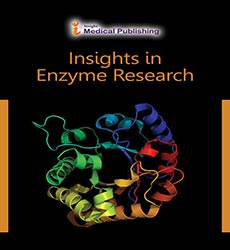Abstract
Purification and Characterization of Active Aggregates of an Organic Solvent Tolerant Lipase from Marinobacter sp. EMB5
Background: Marinobacter is a halophilic bacterial genus and a bio-geochemically important group in sea water, is generally associated with the bioremediation of hydrocarbon-rich effluents released into the salt-rich environment by various anthropogenic activities. It is a well-known lipase producer-the NCBI Protein database shows nearly 520 Marinobacter lipases. In this context, its lipase and esterase are considered important. However, their enzymatic properties in purified form have been scantily studied. Since hydrocarbons are acted upon on solvent water interface, the stability and catalytic behavior of Marinobacter lipase in non-aqueous media needs to be more specifically investigated.
Aim: Marinobacter sp. EMB5 was isolated from Kozhikode, Kerala, India. It was found to be potent lipase producer. The aim of the present work was to obtain a purified preparation and undertake its detailed characterization with respect to above aspects.
Work: The crude Marinobacter sp. lipase was purified by Sephacryl S200 gel filtration chromatography. The lipase eluted as a single activity peak in void volume and had a very high molecular mass. Aggregation has not been reported in case of Marinobacter lipase, so far, although it is known in other lipases. The aggregated lipase was mixed with 2-propanol (70%, v/v) and disaggregated lipase was obtained as a single activity peak in Sephacryl S200 gel filtration chromatography corresponding to 82 kDa molecular mass. This monomeric species was less active than aggregated purified preparation. Hence, further characterization and studies were carried out on purified active aggregate lipase. It was stable in a wide range of organic solvents at high concentration up to 24 h. The organic solvent stability was further investigated by Far UV CD spectroscopy and fluorescence spectroscopy.
Conclusion: Due to the fact that Marinobacter sp. EMB5 lipase remained stable in organic solvents for prolonged incubation periods, it has potential to be used in industrial organic synthesis.
Author(s): R Hemamalini and Khare SK
Abstract | Full-Text | PDF
Share This Article
Google Scholar citation report
Citations : 157
Insights in Enzyme Research received 157 citations as per Google Scholar report
Abstracted/Indexed in
- Google Scholar
- China National Knowledge Infrastructure (CNKI)
- Secret Search Engine Labs
Open Access Journals
- Aquaculture & Veterinary Science
- Chemistry & Chemical Sciences
- Clinical Sciences
- Engineering
- General Science
- Genetics & Molecular Biology
- Health Care & Nursing
- Immunology & Microbiology
- Materials Science
- Mathematics & Physics
- Medical Sciences
- Neurology & Psychiatry
- Oncology & Cancer Science
- Pharmaceutical Sciences

